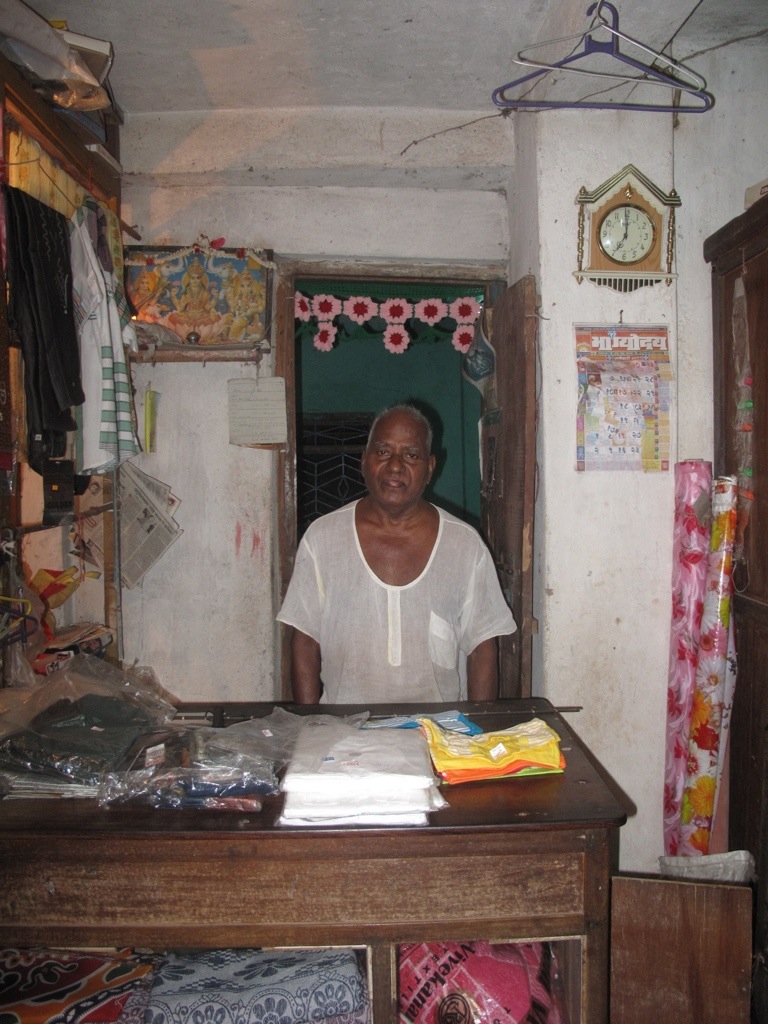A few days ago, I’d anticipated that my next blog post was going to be about how I’m learning to play the harmonium. You know, covering the trials and tribulations and that sort of thing, but actually the story must be about how I’ve been adopted by an Indian family. And it’s wonderful.
I’m in Arambol – a proper old-school hippy hangout in Goa. There are a surprisingly large number of Europeans in their fifties and sixties with long hair, tattoos and substantial moustaches. And that’s just the women…
Arambol’s just starting up for the winter season so it’s really quiet. There’s vast swathes of empty beach and it’s beautiful. Many of the beach huts and restaurants are still in construction and there’s a new yoga class starting up every day. I’ve come here for the five-day course at the Himalayan Iyengar Yoga Centre. Today I had my first class and I’ll tell you more about that some other time.
In the meantime: the harmonium and my adoption. I have been wanting to learn the harmonium for a while. It’s an Indian instrument used to accompany the chanting of bhajans (Sanskrit chants). I like chanting so I thought would be nice to be able to play. I asked a guy who worked on a musical instrument stall if he knew of anywhere I could learn. Later that day I was walking with him to Arambol Market where locals live, slightly inland of the main tourist area. Here there’s guys sitting in chai shops, old women squatting at the side of the road selling piles of fresh fish in washing up bowls. Men sell bananas and cows rummage in grassy verges.
Sharma led me into a tiny shop with a glass counter. The counter contained a haphazard collection of shirts wrapped in plastic. They must have been from the 1970’s. Sharma started speaking in Hindi to an elderly man standing behind the counter. He was shorter than me with grey hair sprouting from his head. He wore a white threadbare grandad shirt that had a hole in one shoulder. He looked grumpy and shuffled about in pyjama trousers that threatened to fall down at any moment. Yes, this was to be my teacher.
Sharma was deep in conversation and referred to him as ‘Baba’ meaning ‘father’ as a sign of respect. I decided to add ‘ji’ on the end as a further sign of respect (Babaji). I got the impression that Babaji wasn’t interested in teaching me. His face remained stern, his brow furrowed. He barely looked at me. I was therefore surprised to hear that he was happy to have me as a student.
We agreed on 5pm everyday and Sharma reiterated how Babaji was a great harmonium/tabla/sitar teacher.
The next day I learnt that the only words Babaji knows in English are “good”, “again” and “more fast”. He’s taught me the Indian version of the do re mi scales (sa, re, ga, ma, pa, de, ni, sa) and we’ve even started on some bhajans. He began with a simple Hare Krishna, Hare Rama and then last night with the help of a piano keyboard app on my iPad, I worked out the tune for Krishna Govinda – one of my favourites. Perhaps I shouldn’t have shown him my findings as today he had me on Raghupati Ragava Raja Ram which was tough.
This video off YouTube gives you an idea of what I’m talking about. I might even get a clip of Babaji before I leave.
We sit on a bench in the living room. The room is quite bare with a ceiling fan and a cabinet containing metal plates and cups and a staggering array of plastic fruit. Next door we hear his daughter and daughter-in-law teaching about 40 children in the small room. The children giggle and peer round the door and get told off. It must be funny to hear this Western girl singing Sanskrit mantras during their after-school club.
Sharma popped by yesterday to see how I was getting on. I will have to say thank you to him in some way.
While I huff and puff working the squeezebox, Babaji’s grandchildren watch TV on the set in the corner and absentmindedly sing along to the bhajans, swinging their feet under the seat. Pradnya is 13 and translates for us, smiling and encouraging me when I hit a wrong note. She smiles a lot.
I am wary of outstaying my welcome but today Babaji’s son and son-in-law came home to find me sitting having a cup of chai and a rich tea biscuit with their children, wives and mother/mother-in-law. They asked me questions about my life in England. What age did I move out of the family home? How far do I live from there? How old are my parents? They were shocked to discover that my Mum is older than my Dad. The women thought this was wonderful as it’s more likely to be the other way round in India. Their son wanted to know what hobbies I had. He’s good at chess. Babaji’s wife was keen to know if I spoke any Hindi or Marathi. I was sad to say no.
They love my iPad and I have been instructed to bring some family photos to show them tomorrow. Babaji showed little interest in all these discussions and instead lit candles at their garlanded altar depicting Ganesha, Shiva and Parvati in the corner of the living room.
I told them that I’ll be around until 15 November and Pradnya excitedly started chatting to her father in Hindi. “You must come for dinner,” he said. “And you will be here for Divali, the festival of lights. Please join us.” I said I would love to. He then gave me a lift back to my guesthouse on the family scooter.
It’s so lovely to get an insight into how Indian people live. I’d much rather do that than hang out in cafes in Arambol eating ommmmlettes (hahahaha), listening to old hippies playing acoustic guitar.



